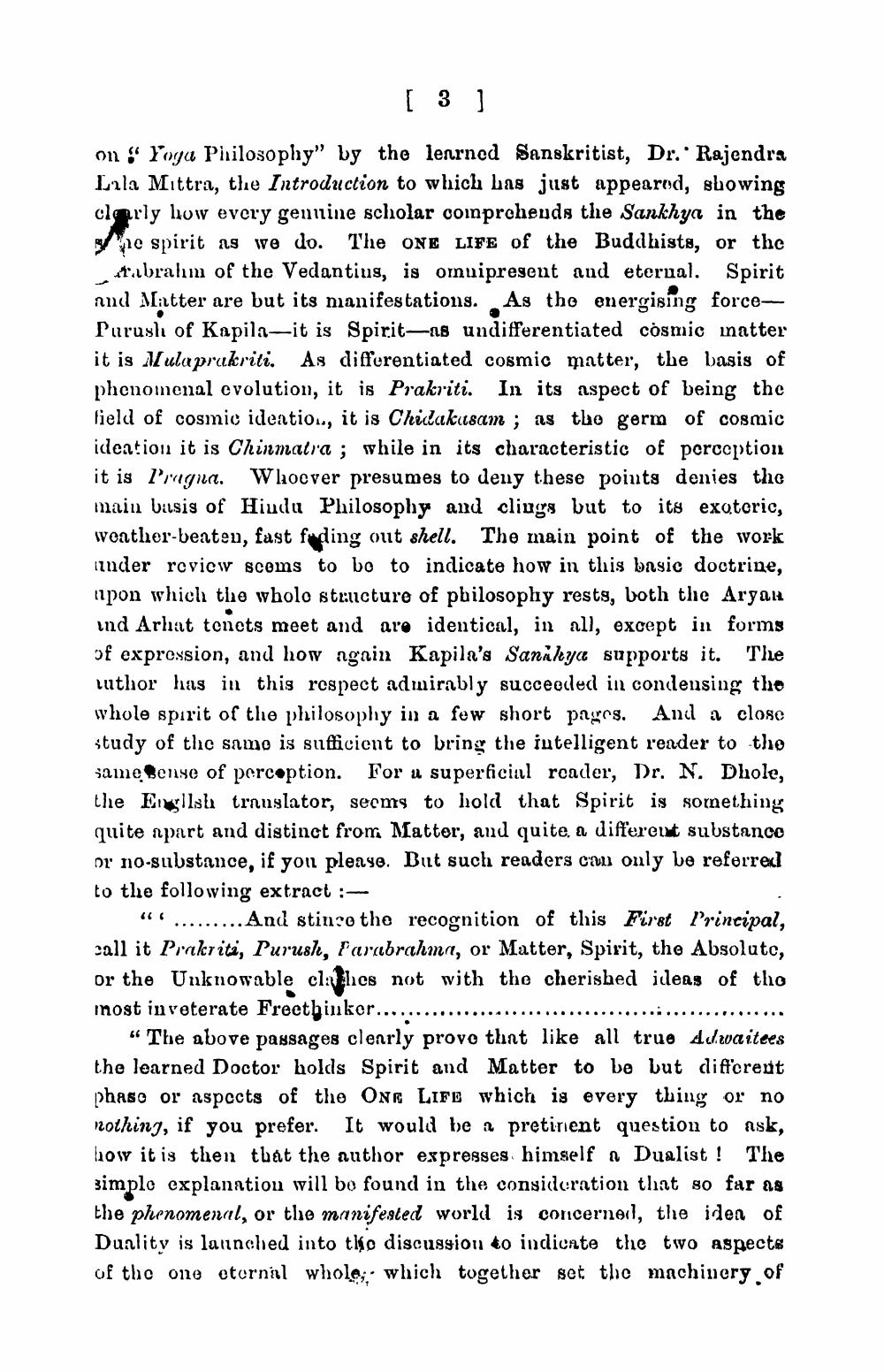________________
[ 3
]
on Yoga Philosophy" by the lenrned Sanskritist, Dr.' Rajendra Lala Mittra, the Introduction to which has just appearod, showing clarly liow every gemine scholar coinprchends the Sankhya in the
e spirit as we do. The ONE LIFE of the Buddhists, or the
abrahm of the Vedantius, is omuipresent and eterual. Spirit and Matter are but its manifestations. As the energising forcePurushi of Kapila-it is Spirit—18 undifferentiated cosmic inatter it is Mulaprukriti. As differentiated cosmic matter, the basis of phenomenal evolution, it is Prakriti. In its aspect of being the field of cosmic identio.., it is Chidakusam ; as the germ of cosmic ideation it is Chinmalra ; while in its characteristic of perception it is l'rngna. Whoever presumes to deny these points denies the main basis of Hindu Philosophy and cliuys but to its exoteric, weather-beaten, fast fading out shell. The main point of the work under review scems to bo to indicate how in this basic doctrine, upon which the whole structure of philosophy rests, both the Argan ind Arhat tenets meet and are identical, in all, except in forms of expression, and how ngain Kapila's Sankhya supports it. The Luthor has in this respect admirably succeeded in condensing the whole spirit of the philosophy in a few short payes. And a close study of the same is sufficient to bring the intelligent reader to the same sense of perception. For u superficial reader, Dr. N. Dhole, the English translator, seems to hold that Spirit is something quite apart and distinct from Matter, and quite a different substance or no-substance, if you please. But such readers can only be referreal to the following extract:
" ... ... ...And stince the recognition of this First Principal, call it Prnkritá, Purush, Farubrahmn, or Matter, Spirit, the Absolute, or the Unknowable clashes not with the cherished ideas of the inost inveterate Freethinker............
“The above passages clearly prove that like all true Adwaitees the learned Doctor holds Spirit and Matter to be but different phase or aspects of the ONE LIFe which is every thing or no nothing, if you prefer. It would be a pretinent question to ask, how it is then tbåt the author expresses himself a Dualist ! The simple explanation will be found in the consideration that so far as the phenomenal, or the manifested world is concernel, the iden of Duality is launched into the discussion to indicate the two aspects of the one eternal whole which together set the machinery of




